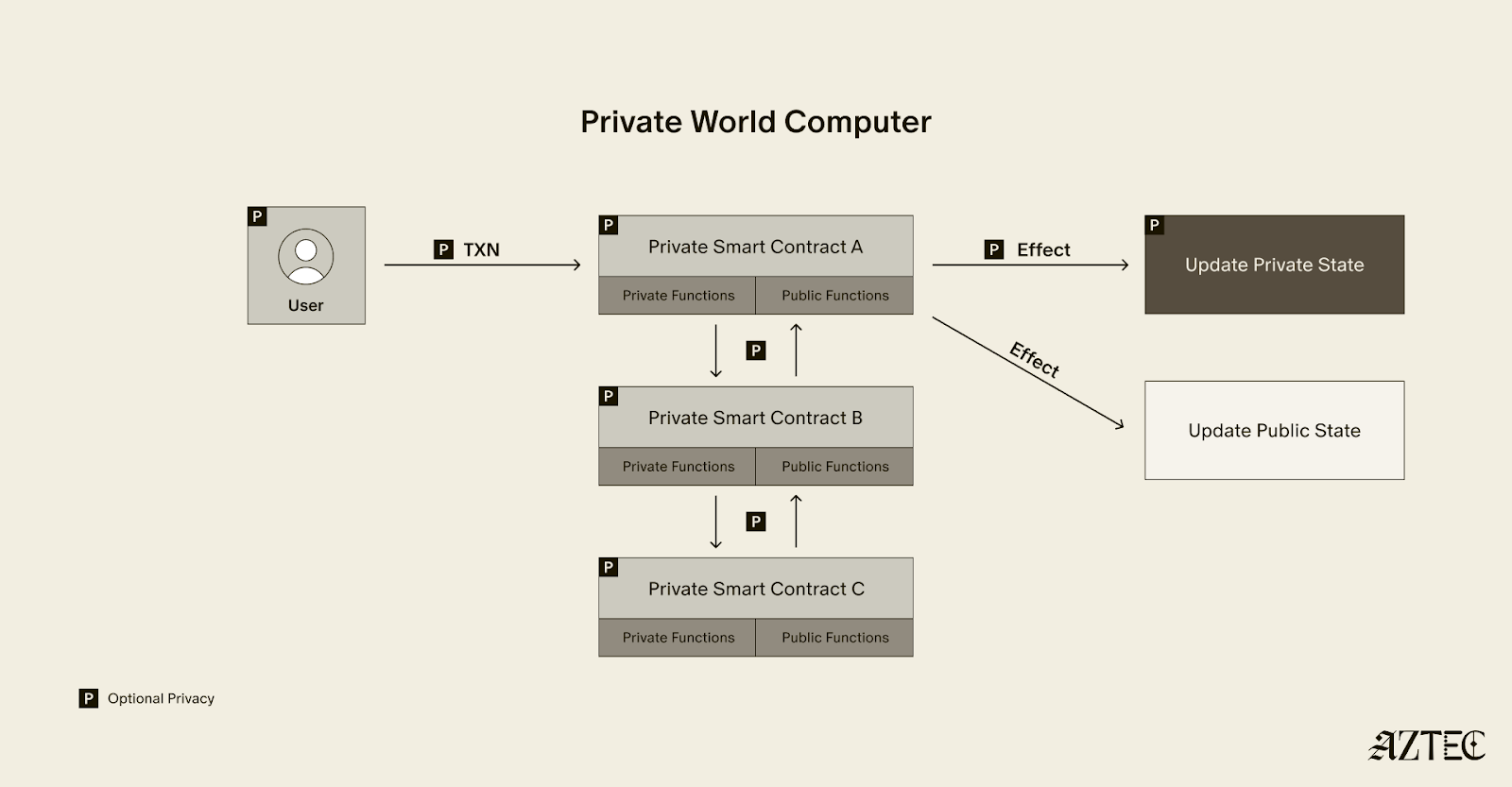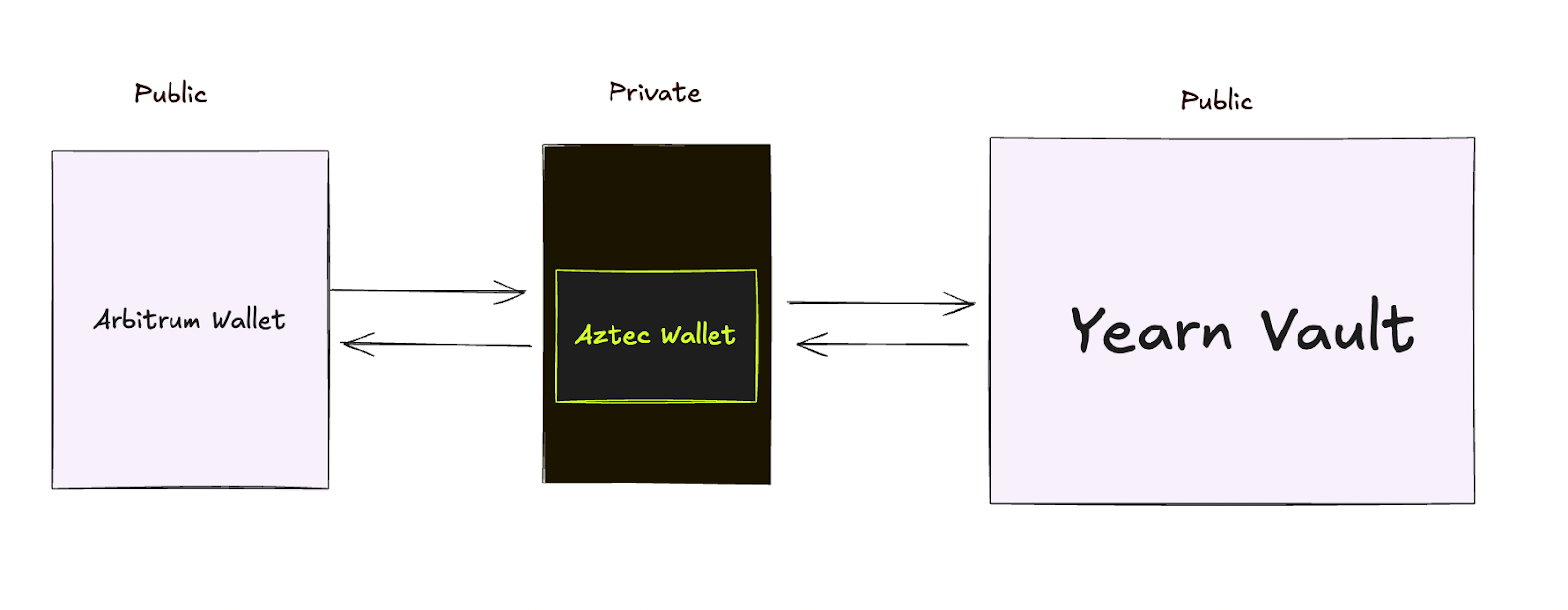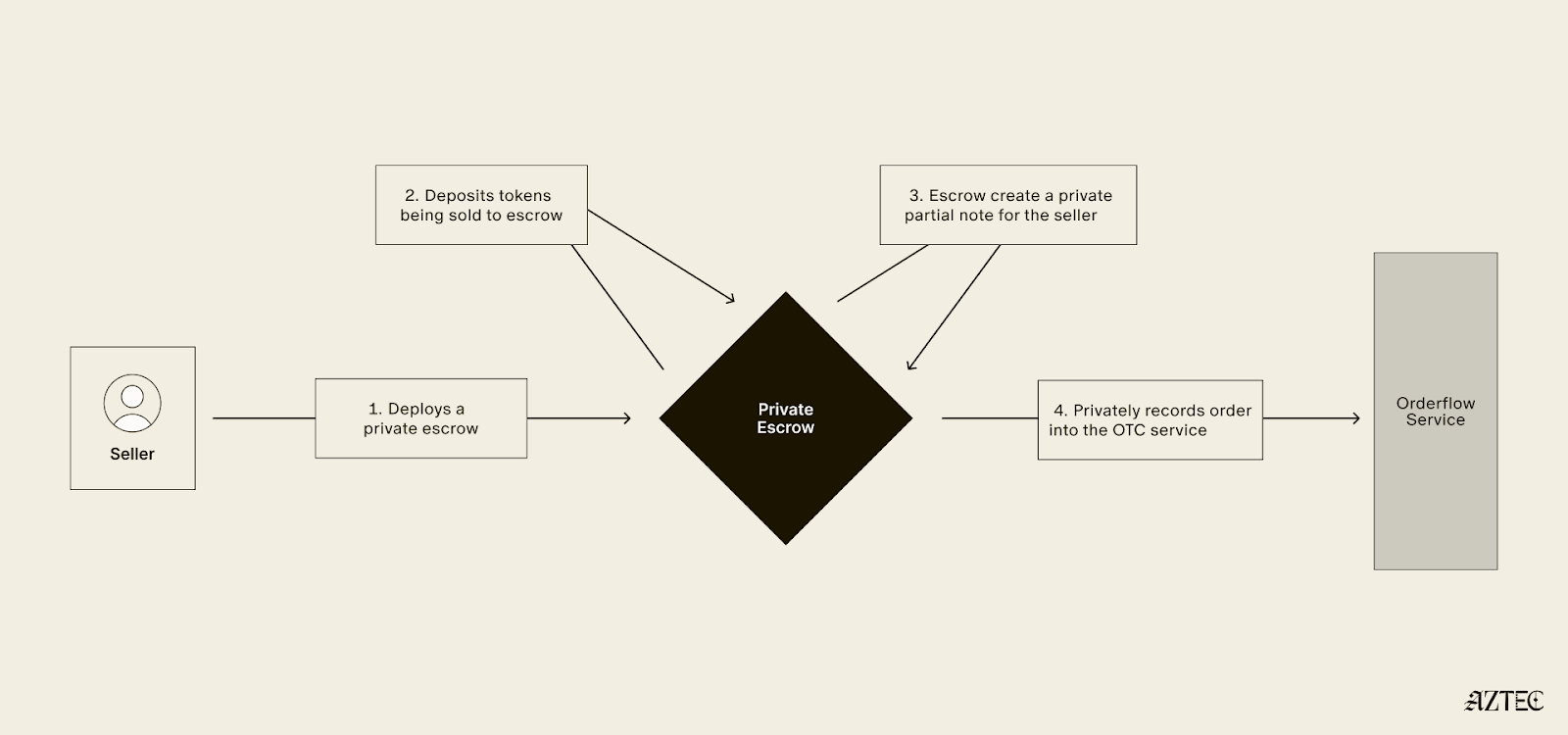The Early Days of Aztec (2017)
When Aztec mainnet launches, it will be the first fully private and decentralized L2 on Ethereum. Getting here was a long road: when Aztec started eight years ago, the initial plan was to build an onchain financial service called CreditMint for issuing corporate debt to mid-market enterprises – obviously a distant use case from how we understand Aztec today. When co-founders Zac Williamson, Joe Andrews, Tom Pocock, and Arnaud Schenk, got started, the world of zero-knowledge proving systems and applications weren’t even in their infancy: there was no PLONK, no Noir, no programmable privacy, and it wasn’t clear that demand for onchain privacy was even strong enough to necessitate a new blockchain network. The founders’ initial explorations through CreditMint led to what we know as Aztec today.
While putting corporate debt onchain might seem unglamorous (or just limited compared with how we now understand Aztec’s capabilities), it was useful, wildly popular, and necessary for the founding team to realized that no serious institution wanted to touch the blockchain without the same privacy assurances that they were accustomed to in the corporate world. Traditional finance is built around trusted intermediaries and middlemen, which of course introduces friction and bottlenecks progress – but offers more privacy assurances than what you see on public blockchains like Ethereum.
This takeaway led to a bigger understanding: the number of people (not just the number of institutions) who wanted to use the blockchain was limited by a lack of programmable privacy. Aztec was born out of the recognition that everyone – not only corporations – could use permissionless, onchain systems for private transactions, and this could become the default for all online payments. In the words of the CEO, Zac Williamson:
“If you had programmable digital money that had privacy guarantees around it, you could use that to create extremely fast permissionless payment channels for payments on the internet.”
Equipped with this understanding, Zac and Joe began to specialize. Zac, whose background is in particle physics, went deep on cryptography research and began exploring protocols that could be used to enable onchain privacy. Meanwhile, Joe worked on how to get user adoption for privacy tech, while Arnaud focused on getting the initial CreditMint platform live and recruiting early members of the team. In 2018, Aztec published a proof-of-concept transaction demonstrating the creation and transfer of private assets on Ethereum – using an early cryptographic protocol that predated modern proving schemes like PLONK. It was a limited example, with just DAI as the test-case (and it could only facilitate private assets, not private identities), but it garnered a lot of early interest from members of the Ethereum community.
“The Product Needs Drive the Proving Scheme” (2018-2020)
The 2018 version of the Aztec Protocol had three key limitations: it wasn’t programmable, it only supported private data (rather than private data and user-level privacy), and it was expensive, from both a computation and gas perspective. The underlying proving scheme was, in the words of Zac, a “Frankenstein cryptography protocol using older primitives than zk-SNARKs.” These limitations motivated the development of PLONK in 2019, a SNARK-based proving system that is computationally inexpensive, and only requires one universal trusted setup.
A single universal trusted setup is desirable because it allows developers to utilize a common reference string for all of the programs they might want to instantiate in a circuit; the alternative is a much more cumbersome process of conducting a trusted setup ceremony for each cryptographic circuit. In other words, PLONK enabled programmable privacy for future versions of Aztec.
PLONK was a big breakthrough, not just for Aztec, but for the wider blockchain community. Today, PLONK has been implemented and extended by teams like zkSync, Polygon, Mina, and more. There is even an entire category of proving systems called PLONKish that all derive from the original 2019 paper. For Aztec specifically, PLONK was also instrumental in paving the way for zk.money and Aztec Connect, a private payment network and private DeFi rollup, which launched in 2021 and 2022 respectively.
The product needs of Aztec motivated the development of a modern-day proving system. PLONK proofs are computationally cheap to generate, leading not only to lower transaction costs and programmability for developers, but big steps forward for privacy and decentralization. PLONK made it simpler to generate client-side proofs on inexpensive hardware. In the words of Joe, “PLONK [was] developed to keep the middleman away.”
Making the Blockchain Real (2021-2023)
Between 2021 and 2023, the Aztec team operated zk.money and Aztec Connect. The products were not only vital in illustrating that there was a demand for onchain privacy solutions, but in demonstrating that it was possible to build performant and private networks leveraging PLONK. Joe remarked that they “wanted to test that we could build a viable payments network, where the user experience was on par with a public transaction. Privacy needed to be in the background.”
Aztec’s early products indicated that there was significant demand for private onchain payments and DeFi – at peak, the rollups had over $20 million in TVL. Both products fit into the vision Zac had to “make the blockchain real.” In his team’s eyes, blockchains are held back from mainstream adoption because you can’t bring consequential, real-world assets onchain without privacy.
Despite the demand for these networks, the team made the decision to sunset both zk.money and Aztec Connect after recognizing that they could not fully decentralize the networks without massive architectural changes. Zac and Joe don’t believe in “Progressive Decentralization” – the network needs to have no centralized operators from day one. And it wasn’t just the sequencer of these early Aztec products that were centralized – the team also recognized that it would have been impossible for other developers to write programs on Aztec that could compose with each other, because all programs operated on shared state. In 2023, zk.money and Aztec Connect were officially shut down.
In tandem, the team also began developing Noir (an original brainchild of Kevaundray Wedderbaum). Noir is a Rust-like programming language for writing zero-knowledge circuits that makes privacy technology accessible to mainstream developers. While Noir began as a way to make it easier for developers to write private programs without needing to know cryptography, the team soon realized that the demand for privacy didn’t just apply to applications on the Aztec stack, and that Noir could be a general-purpose DSL for any kind of application that needs to leverage privacy. In the same way that bringing consequential assets and activity onchain “makes the blockchain real,” bringing zero-knowledge technology to any application – onchain or offchain – makes privacy real. The team continued working on Noir, and it has developed into its own product stack today.
Aztec Today
Aztec from 2017 to 2024 can be seen as a methodical journey toward building a fully private, programmable, and decentralized blockchain network. The earliest attempt at Aztec as a protocol introduced asset-level privacy, without addressing user-level privacy, or significant programmability. PLONK paved the way for user-level privacy and programmability, which yielded zk.money and Aztec Connect. Noir extended programmability even further, making it easy for developers to build applications in zero-knowledge. But zk.money and Aztec Connect were incomplete without a viable path to decentralization. So, the team decided to build a new network from scratch. Extending on their learnings from past networks, the foundations and findings from continuous R&D efforts of PLONK, and the growing developer community around Noir, they set the stage for Aztec mainnet.
The fact of the matter is that creating a network that is fully private and decentralized is hard. To have privacy, all data must be shielded cheaply inside of a SNARK. If you want to really embrace the idea of “making the blockchain real” then you should also be able to leverage outside authentication and identity solutions, like Apple ID – and you need to be able to put those technologies inside of a SNARK as well. The number of statements that need to be represented as provable circuits is massive. Then, all of these capabilities need to run inside of a network that is decentralized. The combination of mathematical, technological, and networking problems makes this very difficult to achieve
The technical architecture of Aztec reflects the learnings of the Aztec team. Zac describes Aztec mainnet as a “Russian nesting doll” of products that all add up to a private and decentralized network. Aztec today consists of:
- A decentralized Prover and Sequencer network that eliminates central points of control
- The Privacy Execution Environment (PXE) that enables client-side proving
- Significant innovations in proving systems, including the faster, low-memory proving systems optimized for browser performance
At the network level, there will be many participants in the decentralization efforts of Aztec: provers, sequencers, and node operators. Joe views the infrastructure-level decentralization as a crucial first stage of Aztec’s mainnet launch.
As Aztec goes live, the vision extends beyond private transactions to enabling entirely new categories of applications. The team envisions use cases ranging from consumer lending based on private credit scores to games leveraging information asymmetry, to social applications that preserve user privacy. The next phase will focus on building a robust ecosystem of developers and the next generation of applications on Ethereum using Noir, the universal language of privacy.
Aztec mainnet marks the emergence of applications that weren't possible before – applications that combine the transparency and programmability of blockchain with the privacy necessary for real-world adoption.





